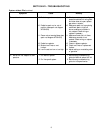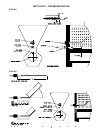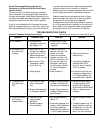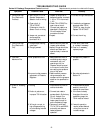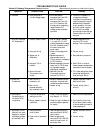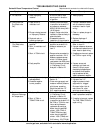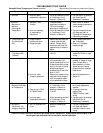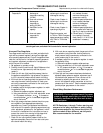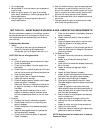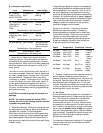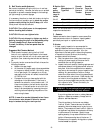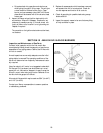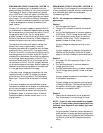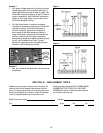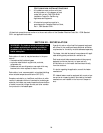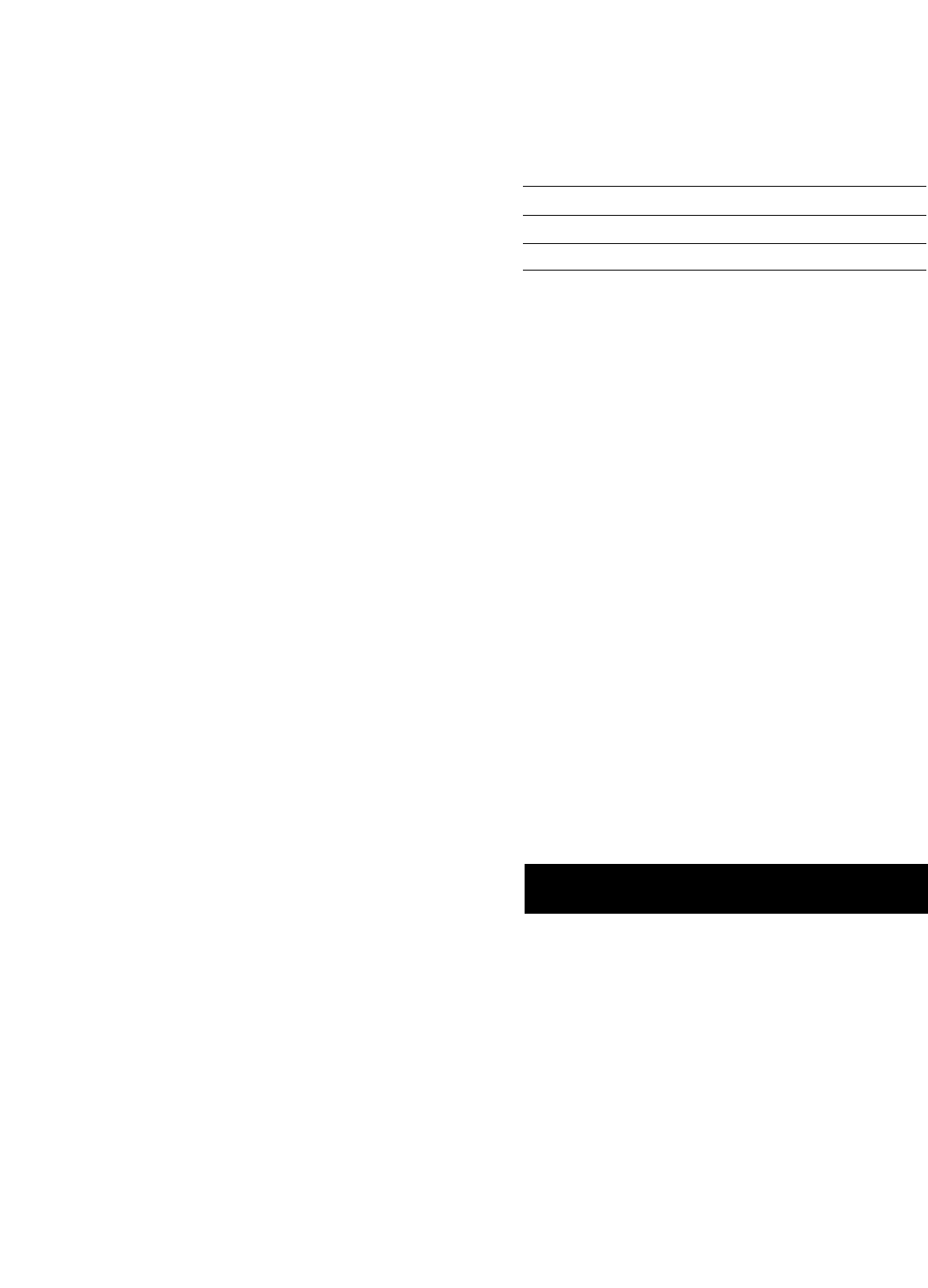
19
D. Belt Tension and Adjustment
Belt tension is adjusted during the initial run-in and test
periods at the factory. However, the belts are run as slack
as possible to prevent excessive damage to the bearings,
yet tight enough to prevent slippage.
It is necessary, therefore, to check belt tension during the
first few months of operation, and to check for proper
tension weekly during the first 60 days, after which
30-day check intervals are sufficient.
CAUTION: Turn off all power to the equipment
before checking belt tensions.
CAUTION: Do not over tighten belts.
CAUTION: Do not attempt to tighten any belt or
belts by changing the pitch of an adjustable pulley.
This will change the air flow and fan speed.
Consult the factory if the fan speed must be
changed.
Suggested Belt Tension Method
1. Check tension frequently during the first 24-48
hours of run-in operation. Ideal tension is the lowest
tension at which the belt will not slip under peak load
conditions. Over tensioning shortens belt and bearing
life.
2. To properly tension a conventional V-belt drive,use the
following procedure:
a. Measure the span length.
b. At the center of the span, apply a force perpendicular
to the span to deflect the belt 1/64 inch for every
inch of span length. For example, for a 40 inch
span, apply a force that will deflect the belt 40/64
or 5/8 of an inch.
c. Compare the force you have applied with the
values given in the table below. If the force is
between the values for normal tension and 1 1/2
times normal tension, the belt tension should be
satisfactory. If the belt tension is not within this
range, it can be adjusted by loosening the motor
mounting bolts and adjusting the position of the
motor along its base.
NOTE: A new drive can be tightened to two times
the minimum value shown to allow for normal
drop in tension during the run-in period.
F. Gaskets
Gaskets are used on doors, inspection covers, some filter
racks, and some outdoor air dampers. Inspect gaskets
periodically and repair or replace as required.
G. Heater
1. At least a yearly inspection is recommended for
heating installations and more frequently for process
applications in year-round operation. Your own
experience is the best guide in determining frequency
of inspection, but as a minimum, the following
procedure should be followed:
a. Shut the system down totally, disconnecting or
locking out power supply so there can be no
accidental start-up during inspection.
b. Inspect the burner carefully, including upstream and
downstream sides of mixing plates as well as burner
body face. Note that complete burner assembly
may have to be removed for proper inspection and
cleaning. Any accumulation of scale or foreign
material on either side of the mixing plates should
be removed with a wire brush. Check visually that
no holes in the mixing plates are blocked. If any
burner ports are plugged, even partially, clear them
with a piece of wire. Consult the factory for
alternate procedures.
If any mixing plates are loose or missing fasteners,
tighten or replace as necessary. Always use zinc
plated or stainless fasteners.
The mixing plates on the burner may display
“hairline” cracks. These cracks are normal and
caused by thermal stresses occurring during com-
bustion. The presence of these “hairline” cracks in
no significant way affects the combustion efficiency
or performance of the heater. Should a large
opening develop, it may cause difficulties in cross
ignition of flame across the face of the burner. If
this does occur, the specific mixing plate or plates
involved must be replaced.
B Section
small
pulley
diameter
range in
inches
Belt
Manufacturer &
Type Belt
Pounds
Force for
Normal
Tension
Pounds
Force for
11/2 times
Normal
Tension
3.4-4.2 Gates Hi-Power 4.4 6.6
Gates Hi-Power
Gates Hi-Power
4.9 7.4
5.8 8.7
4.4-4.6
5.8-8.6
WARNING: Do not enlarge burner ports or
performance may be drastically affected.
Note: For recommendation of other types of belts, consult
respective manufacturers.



